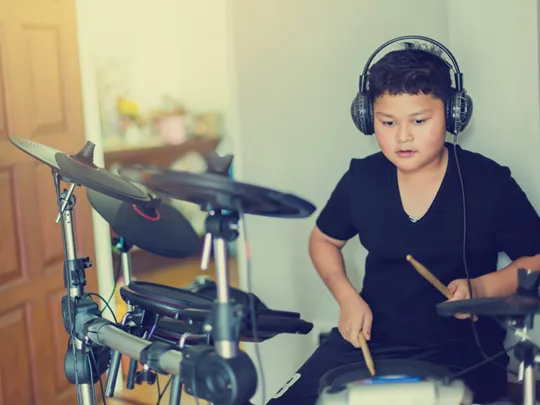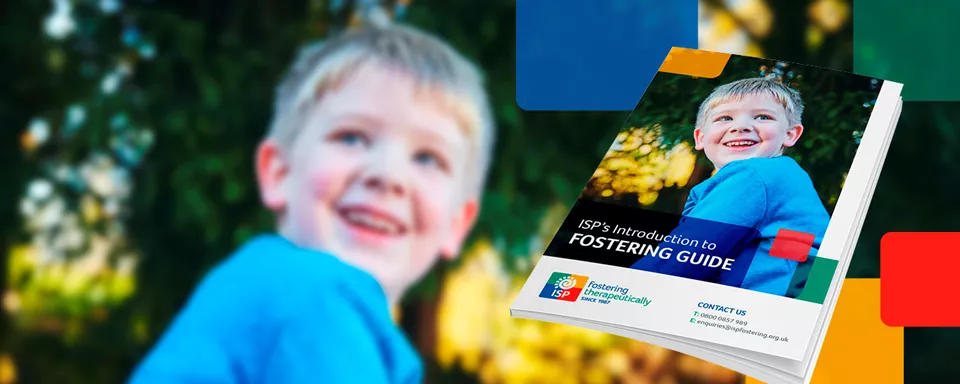In order to help children in care heal from trauma, we need to understand how difficult experiences faced early on can impact their emotional and psychological development.
Sensory play and sensory activities are one of the ways we can achieve this. But, what is sensory play and why is it important for children in care?
In this article, you’ll learn:

What is sensory play?
Sensory play and sensory activities are any activities that stimulate the senses. By stimulating touch, hearing, sight, taste, and smell, it can help children not just interact with the world and people around them, but make sense of it all too.
Sensory play includes play that engages any or all of a child’s senses, but it also covers movement, balance, and spatial awareness.
The different characteristics of sensory play relate to the five senses but with an additional two senses aligned with balance and the awareness of the position and movement of the body.
These characteristics include:
Tactile play
Exploring with touch.
Vestibular sensory play
Exploring through balance (rolling, hanging, swinging, jumping, etc).
Proprioception sensory play
Exploring different movements to develop spatial awareness of the body.
Auditory sensory play
Exploring with different sounds to develop hearing and sound recognition.
Visual sensory play
Play to help develop vision and sight.
Olfactory and taste sensory play
Play that explores smell and taste.
Why is sensory play important?
While sensory play is a fun and interactive activity, it also plays a vital role in a child’s learning and overall development.
- It helps young minds absorb the information they need about the world in order to master their surroundings.
- It’s grounding and supports emotional regulation by connecting children to the here and now.
- It’s especially soothing for neurodivergent people, or those who interact with the world differently due to conditions like foetal alcohol syndrome disorder (FASD), global development delay (GDD), or children who are not able to communicate verbally.
- It’s an important part of childhood that many children in care will have unfortunately missed out on.
- It’s a fun way to learn how to form relationships when playing with another person.
- It can be a calming activity that helps children to decompress.

Impact of childhood trauma on sensory processing
There are many different ways that childhood trauma can affect a person’s ability to process, regulate and respond to sensory information.
Sense memories
Firstly, babies and toddlers do not have the language to categorise memories. Instead, early memories are embodied in their sense memory. These sensory memories relating to frightening experiences – that could be certain sounds, types of touch, or even smells – are imprinted in the child’s autonomic nervous system as signs of danger that demand a survival response; ready to activate the fight, flight or fawn response at a moment’s notice.
Missed opportunities for key development
There are also many children in care who’ve grown up without consistent and nurturing interactions from their parents. These children may have missed out on the necessary opportunities for exploration and stimulation during critical developmental stages in infancy.
For example, as an infant, they might have been left in a mostly dark or visually unstimulating room with minimal physical contact and virtually no opportunities for movement (such as swinging, rocking, or crawling). Or they may have experienced overwhelmingly stimulating environments and had to shut down to survive.
Neurodivergence and health conditions
Sensory difficulties can also be associated with conditions such as sensory processing disorder (SPD) and autism spectrum condition (ASC).
Sensory difficulties experienced by children living with trauma
Some of the sensory sensitivities or difficulties that children with complex trauma may experience include:
Hypersensitivity to sensory stimuli
Children can become overwhelmed by:
- Certain sounds – e.g. loud noises, alarms, clock ticking
- Visual stimuli – e.g. bright lights, colourful patterns
- Tactile stimuli – e.g. textures of certain fabrics, hot or cold objects, a person’s touch
- Tastes – e.g. sweet, sour, salty, etc
- Smells – e.g. foods, unpleasant odours, perfumes
Difficulty filtering out irrelevant sensory information
Children may find it challenging to ignore background noise, distractions, or less important sensory inputs.
Struggling to integrate sensory input effectively
This can lead to a fragmented or disjointed perception of a child’s surroundings and experiences.
For example, a child may struggle to balance and appear clumsy if they have proprioceptive difficulties (spatial awareness and movement).
Sensory play benefits for child development
Sensory play encourages learning through:
- Exploration
- Curiosity
- Problem-solving
- Creativity
It also builds nerve connections in the brain and encourages the development of motor skills, relationship-building, and language.
Sensory activities for children in care
Sensory activities have the ability to build cognitive skills, influence how the child in your care learns about their world, and help them develop skills they may have missed out from their earlier life. This helps them recover a sense of mastery and presence in the physical world and their own bodies too.
They can also help to calm a child’s environment and provide them with regular opportunities to relax, which enables them to experience their mind and body in a different way and over time can reduce their degree of stress and anxiety.

Sensory play ideas for children
Some sensory activities for children with trauma that focus on engaging the different senses can be found below.
Sensory activities like these are also a great way to help ground the child in your care back to reality when they’re feeling disengaged from the world or people around them.
Sight Activities (Visual)
- Watch liquid toys such as lava lamps, fibre optic lights, oil and water drippers, and Galileo thermometers.
- Create bottles filled with colourful liquids, glitters, or small objects.
- Sensory rooms for children with disabilities.
Touch Activities (Tactile)
- Play with sand, playdough or clay.
- Draw, paint, or do other arts and crafts.
- Play with hand-held manipulative toys such as fidget toys, popping toys, stress balls, and tangle relaxers.
Sound Activities (Auditory)
- Listen to music on a beanbag.
- Play with drums, bells or other musical instruments.
- Fill containers with rice or beans and let children shake them to create sounds.
Smell Activities (Olfactory)
- Add scents like vanilla or lavender to playdough.
- Create sensory bins with different herbs, spices and scented oils.
- Draw with scented pens.
Taste Activities (Gustatory)
- Simply cook or bake together.
- Drink thick drinks through a straw.
- Combine different flavours, such as sweet and sour, for taste experiments.
Spatial Awareness Activities (Proprioception)
- Strength-training exercises such as wall squats, planks, and crunches – if the child is able to do so.
- Yoga or Tai Chi.
- Obstacle course with tunnels, balance beams and climbing elements.
Balance & Movement Activities (Vestibular)
- Dance, run, skate.
- Bounce on a trampoline.
- Swing on a swing or hammock.
Internal Body Awareness Activities (Interoception)
- Take deep abdominal breaths through your nose and out your mouth.
- Body scanning.
Help make a positive impact on a child’s life
At ISP, we’re dedicated to helping children and young people in care to recover from trauma. With your help, love, patience, understanding, and care, we can make a lasting, positive difference.
Understanding the connection between sensory processing and trauma can play a big part in this, and it is one of the things you’ll learn more about with our specialist foster parent training.
If you would like to know more about fostering with ISP, then we would love to hear from you. Enquire today or download our guide and get started on your amazing fostering journey.
Our recent blogs…







